Assembly line workers in Clintonville kept the armies rolling forward at the front.
In a Fireside Chat on December 29, 1940, President Franklin Roosevelt said “We must be the great arsenal of democracy.” The Four Wheel Drive Auto Company (FWD) in Clintonville, Wisconsin, was soon on board. FWD president Walter Olen announced, “The government has given us a beautiful sign [pictured on the left], “Defense Plant Part of the Arsenal of Democracy,” recognizing our plant and our employees as being engaged in national defense.”
FWD company grew continually since its founding as Badger Four Wheel Drive Auto Company in 1909, but never as quickly as it did during World War II.
The company opened its testing grounds to the public for special occasions. Here, spectators attending a war bond rally watch a military vehicle plow through engine-deep mire in a 30-foot long mud trap. Other tests that day included a 70-percent-grade dirt hill and a section of four-foot-deep fine-grain sand.
FWD manufactured 24,000 military vehicles during the war. Load capacities ranged from 2.5 to 15 tons for hauling cargo, recovering tanks, disposing of bombs, building pontoon bridges, and plowing snow off airfields. The War Department released this photograph with the caption “Ready to transport men and equipment with fighting forces up to the front lines is this six-ton FWD four-wheel-drive truck.”
Responding to the Japanese threat to the Aleutian Islands, Alaska, and Canada, the United States built the 1,600-mile Alaskan-Canadian Highway, known as the Alcan Highway, to allow easier and quicker transportation of military equipment and personnel. Hundreds of FWD trucks were involved in the construction project.
On Pearl Harbor Day FWD presented a truck to the US Marine Corps to replace one the Japanese captured on Wake Island. Each employee gave three hours’ pay toward the purchase, and the company absorbed the balance.
FWD sponsored a Drive Day rally in 1943 as part of a US war bond drive. Prior to demonstrations at the FWD testing grounds, a parade of more than 1,000 marchers and 60 trucks, including these three FWD 15-ton tank transporters, passed through the streets of Clintonville, Wisconsin.
Boy Scouts and FWD female employees dressed like Rosie the Riveter (in front of the scouts) were among the parade’s marchers.
Despite the drizzle that began after the parade, an audience estimated at 5,000 gathered along with the Clintonville High School marching band (in the middle area of the photo) to listen to company president Walter A. Olen and others urge ever-greater efforts to buy war bonds and to increase vehicle production.
FWD received the US Army Ordnance Award for its part in supplying vehicles. The printed program for the April 29, 1943, award ceremony included a copy of the letter FWD president Walter Olen sent to the Chicago Ordnance District.
FWD president Walter Olen was among the VIPs who addressed the crowd at the Ordnance Award ceremony. Another VIP, US Army Major H.J. Prebenson, told the assembled 5,000 “The never-ending stream of implements of war, which comes from this very plant is your part of the job. Let it never be said that anyone in this stouthearted production army let our fighting men down.”
The US government recognized “high achievement in the production of war materials” with the Army-Navy Production Award, commonly known as the E Award. FWD was among the recipients and held an award ceremony on December 16, 1943. The company gave a copy of this certificate to each of its employees.
R.H. Schmidt, FWD’s general sales manager, addresses the crowd during the E Award ceremony. While management played a visible role in the program, emphasis was on the average worker. The FWD employee choir opened the ceremony singing “America” while the employee band closed it with the national anthem.

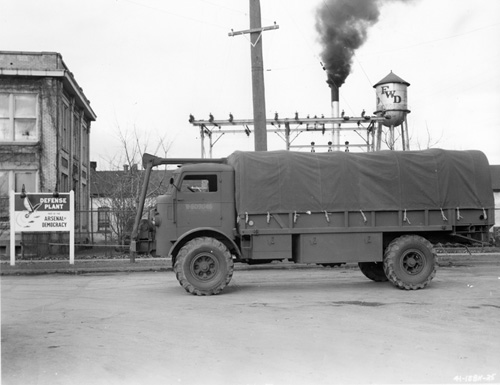
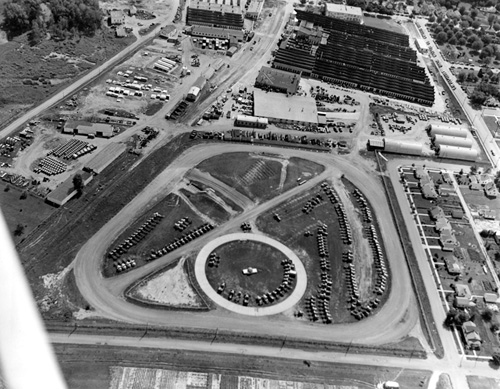
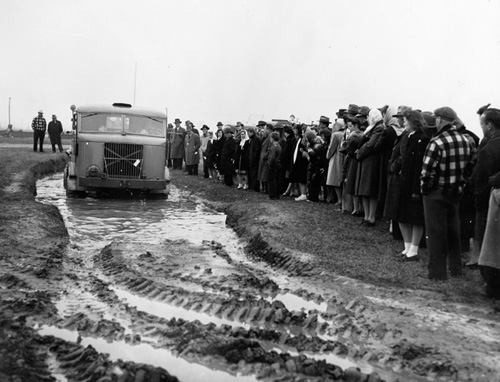
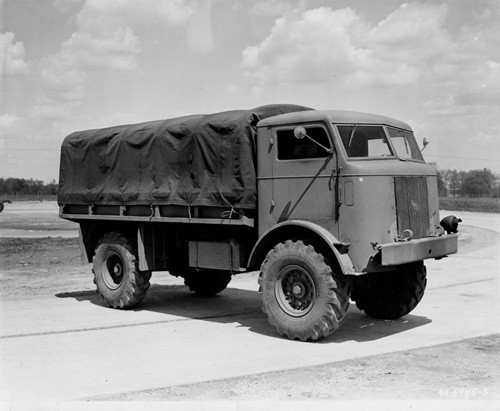
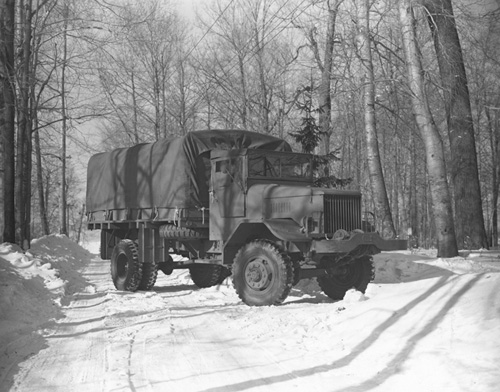
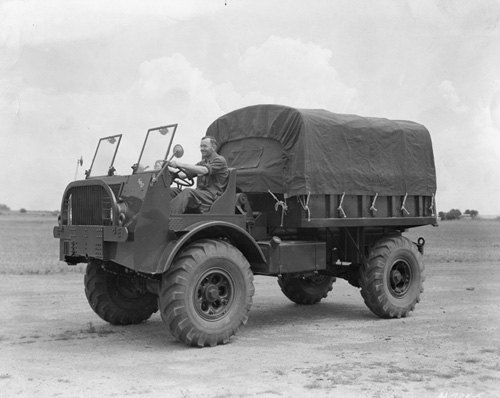
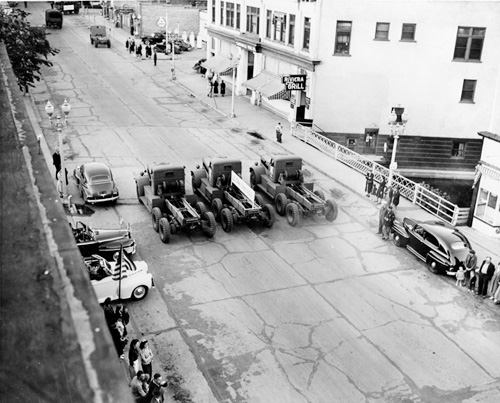
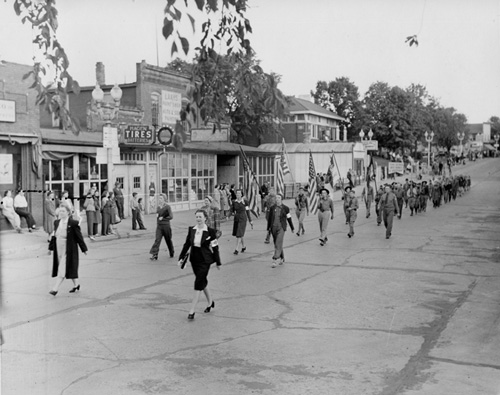
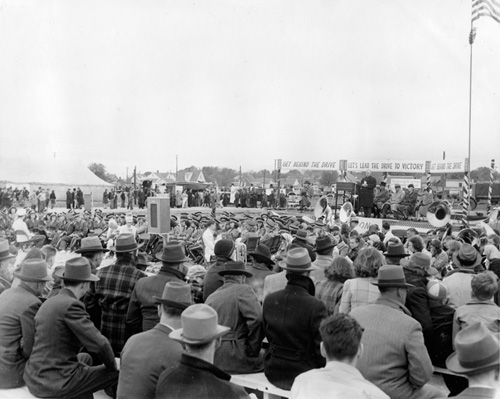
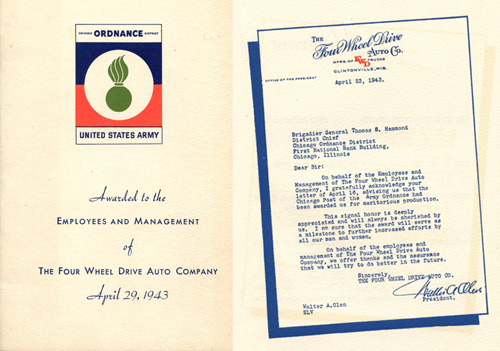
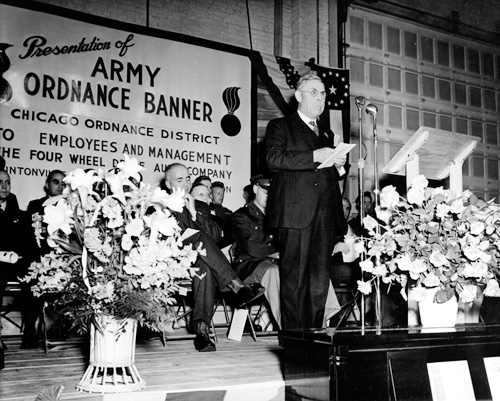
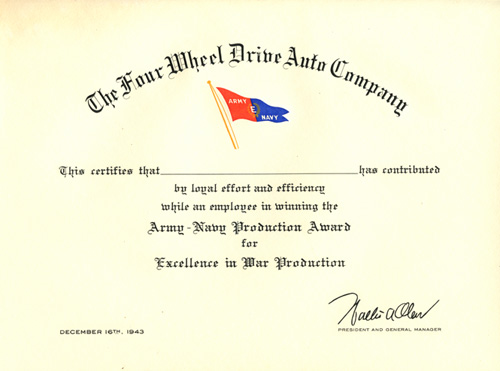
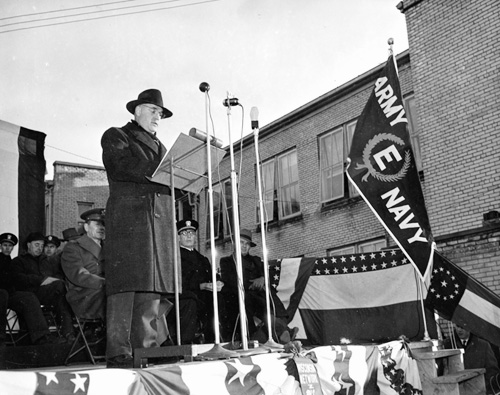

FOLLOW US »
